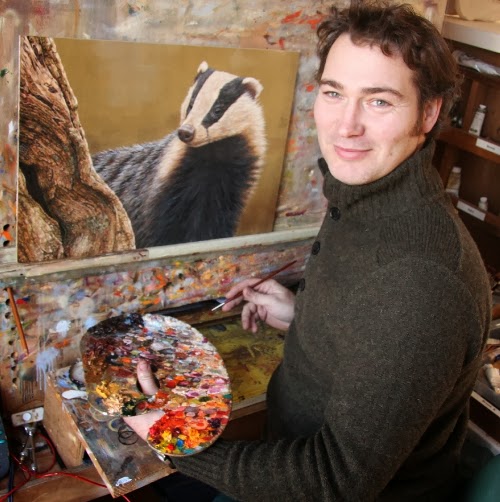Hello, I’m delighted to introduce myself as a new local patch reporter for BBC Wildlife Magazine.
I am a wildlife artist and will be bringing you a painter’s perspective on the comings and goings of all the wild animals on my patch.
This will include all the latest news on my wild painting models, some of them new subjects and many of them old hands at posing for their portraits in exchange for titbits or a nest box.
I use my photographs and sketches as reference and sometimes I get just the right pose to paint from.
Over the next year I will be keeping you up to date on a pair of tawny owls that I feed in my garden as well as reporting from a badger sett where they have accepted me as part of the clan and allow me to walk among them.
I have lived in this area for most of my life and my knowledge of the local wildlife stretches back many years.
Most of the badgers, foxes, deer and owls around here are a bit like old friends. I catch up with them most days to see how they are doing.
I spend as much time as I can out watching wildlife, but over the years I have also adapted my garden so that the local wildlife can come to me.
I’ve planted a wildlife meadow and woodland and have dug a pond to attract the birdlife. Among the many garden birds that now visit is a colony of more than 60 tree sparrows. I’ve even had redstart in the summer and there is a pair of kestrels that have nested in the garden.
So, many of the stories I will be sharing with you will be about the wildlife that I can see from my studio window.
At the weekend I started to build a false earth for foxes. My plan is to attract a vixen and then photograph the cubs from a sunken hide. I’ll let you know how I get on.
While I was there I checked to see if the kingfishers were about. There was no sign but I’m still hopeful that they will be back because last year I built an artificial bank (pictured) there for them to nest in. It has two secret chambers, one for the kingfishers to nest in one and for me to watch them from.
On my way home I spotted a barn owl. It has been raining heavily here all week and this one was taking advantage of a dry spell to go out hunting.
Barn owls are my favourite bird of prey and so expect lots of news about how the pairs nearest me are doing.
In my spare time I’m involved in a conservation project to help protect these beautiful birds of prey and I’ll be checking some of the 150 nest boxes that I have put up on farmland around here. I like to paint barn owls best – as you no doubt will find out!



















